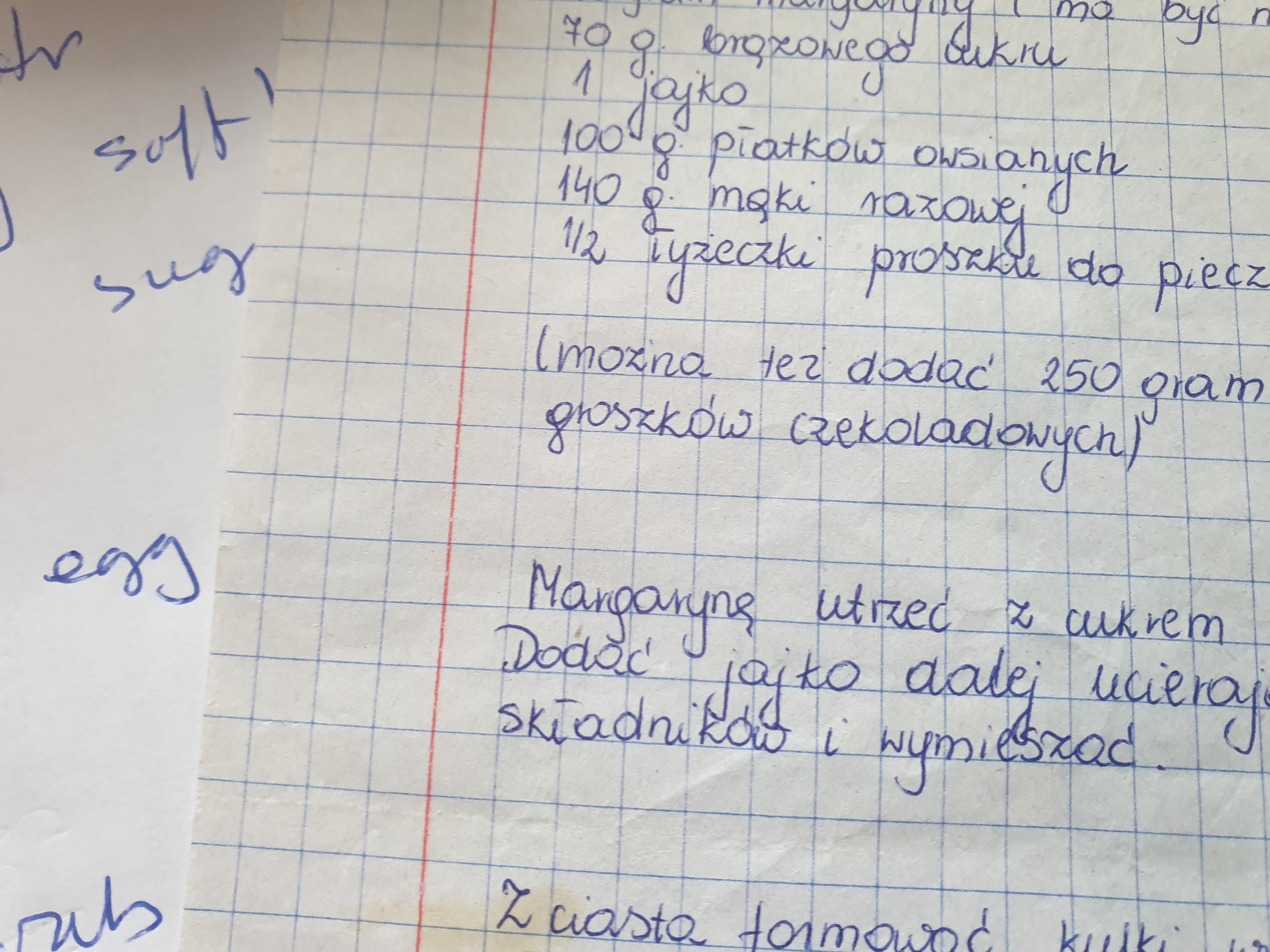- I have been able to buy lots of second hand Polish cookery books in the past few weeks.
- Inside one of them was a handwritten recipe for these biscuits.
- It is written in the lovely handwriting people are taught in Poland.
- I wish my writing was clear and neat as this.
- I decided to try these biscuits and was very pleased with the result.
- They only have a small amount of sugar so they go well with cheese.


Heathcote cake plate – Made in England
INGREDIENTS
- 120g butter – softened
- 70g soft brown sugar
- 1 egg
- 100g rolled oats
- 140g rye flour
- ½ teaspoon of baking powder.
METHOD
- Pre-heat the oven to GM4 – 180°C.
- Grease two baking sheets.
- Beat the butter and sugar together
- Add the egg and carry on beating.
- Mix the oats, rye flour and baking powder together.
- Add this dry mixture to the butter mix.
- Mix together until everything is combined.
- Make small balls of the mixture and place these on the sheets.
- Bake for 15 – 20 minutes.
- About half way through the baking – flatten the balls with a spatula.
- Leave the trays to cool on a wire baking rack.


















